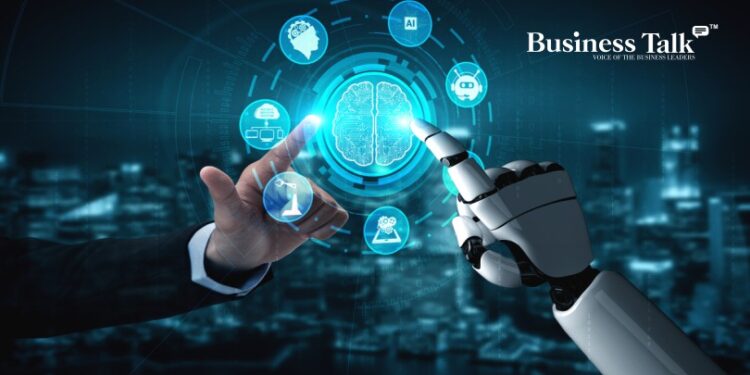The rate of technological development isn’t slowing down any time soon, and it keeps shaping trends. AI is a good example. Artificial intelligence (AI)-enabled machines could store and analyze data to produce insights, such as trends, user behaviors, business findings, etc., to predict occurrences and create projections for the future. AI can also closely resemble human studying, seeing, and language skills. Additionally, it can increase workplace productivity and make workers more effective at their professions. The industry’s landscape is evolving as a result of the technology assuming more and more responsibilities.
As AI replaces boring or perilous obligations, human labor is freed to focus on tasks that need creativity and empathy. Businesses currently rely on AI assets for increased productivity, quicker insights, and improved customer experiences. In the following article, we will look into the top 10 AI technology to watch out for in 2025.
Top 10 AI Technology to Watch Out For in 2025
1. Natural Language Generation (NLG)
Natural language generation (NLG) is the process of producing written or spoken scripts from analysed data using AI. NLG includes linguistic computation, natural language processing (NLP), and natural language understanding (NLU), all of which are connected to human-to-machine and machine-to-human interaction. Large amounts of numerical data can be mined using advanced NLG programs, which can also spot patterns and communicate that knowledge in a way that is simple for people to understand. NLG programs speed is particularly helpful for publishing news and other urgent stories online. It’s one of the AI Technology to watch out for.
2. Image recognition
Image recognition software is used to identify places, designs, individuals, items, structures, and other details in digital images. A computer can’t see objects the same way humans do, so an image recognition tool builds a digital image of the object out of picture elements, also called pixels, each of which has a finite, definite quantity of numeric information for its color or grey level. The computer interprets an image as a collection of numerical values for these pixels, and in order to identify a particular image, it must spot recurring trends in those numbers. Image recognition is different from object detection in that it recognizes images and groups them into classes rather than examining an image and identifying various items.
3. Speech recognition
Speech recognition, commonly referred to as automated speech recognition (ASR), computerized speech analysis, or speech-to-text, is a feature that allows software to convert spoken language into written text. Although it’s frequently confused with voice recognition, speech recognition emphasizes converting speech from a verbal format to a text one, whereas voice recognition solely aims to recognize a specific user’s voice. There are numerous voice recognition programs and gadgets, but the most sophisticated ones make use of artificial intelligence and machine learning. To comprehend and process spoken language, they incorporate grammar, syntax, signal composition, and audio and voice signal structure.
4. Marketing Automation
By using AI, boring marketing tasks can be automated. In addition to increasing efficiency, marketing teams can automate monotonous processes like social media posting, email marketing, and even ads to give their clients a more individualized experience. Marketing automation speeds up and simplifies these activities. Multiple problems a firm face can be solved by a marketing automation platform. in particular, difficulties with lead creation and consumer interaction. By using data to drive workflows, a marketing automation platform can aid in overcoming these obstacles.
5. Content Creation
Many marketers have an ambivalent attitude toward creating content. It encourages users to use their creativity to create engaging blog posts and strong writing for publications like ebooks, whitepapers, and upcoming tutorial videos. But it can also take a lot of time and be difficult, particularly if you depend on your gut feeling to be accurate all the time. It can be greatly facilitated with a content creation tool. These tools employ NLP and NLG models, which study the physiology of human speech to produce their own variants that appear human. Before the AI technology creates the content, marketers can enter descriptions, ideas, and any other important components. Definitely among the AI technology to watch out for.
6. Decision Automation
By employing logic engines and algorithms to analyze data and make conclusions based on predetermined criteria, AI may automate the decision-making process. By eliminating errors and increasing efficiency, this can assist companies in making swift, consistent judgments. Large data sets are easily analyzed by AI, which can be put to use to learn from the data and generate predictions or judgments. Of fact, any industry, including healthcare, banking, transportation, and more, could use this. It can boost crop yields, identify fraud before it happens, detect diseases, and even improve user interfaces in a variety of applications.
7. Machine Learning
It is an area of AI that concentrates on using data and algorithms to mimic how people learn, thereby increasing its accuracy. Algorithms are trained using statistical techniques to produce predictions or categories and to find significant trends in mining data. The decisions made as a result of these insights influence key growth indicators in applications and enterprises, ideally. The majority of the time, frameworks that hasten the creation of products and solutions are used to design machine learning algorithms.
8. Cyber Security
By evaluating vast amounts of risk data to improve reactions and support underfunded security operations, AI is revolutionizing cybersecurity. AI is assisting underfunded security analysts to stay current with threats as cyberattacks increase in volume and intricacy. Machine learning algorithms are used by AI-powered systems to identify and address known and unexplored malware threats. Large volumes of data can be analyzed by machine learning algorithms to spot anomalous trends that are hard to spot by humans. AI can also spot brand-new, undiscovered threat strains that standard antivirus software would overlook.
9. Intelligent Automation
Intelligent automation (IA) combines AI with automation tools such as cognitive machinery, machine learning, business process automation (BPA), and robotic process automation (RPA). IA tools streamline procedures. AI makes use of data obtained from a variety of sources and feeds that data to devices and services to improve the value of their exchanges. RPA is useful for automating structured data-based activities, many of which once needed manual interaction. The two work well together to provide solutions that employ technology as a framework to simplify interactions and procedures between applications.
10. Deep Learning Platforms
Without having to start from scratch, deep learning platforms allow users to easily develop, train, and deploy robust neural networks for a variety of applications. A deep learning platform’s core typically consists of a number of elements, including an AI engine, data management tools, development structures for creating unique models from scratch or optimizing pre-existing ones, and deployment options for putting trained models into use. It can aid in the creation of novel items and services, the automation of tasks, and the enhancement of customer service.
Conclusion
Those are the top 10 AI technology to watch out for in 2025. A more individualized approach is emerging in a number of businesses as a result of these innovations. These AI tools are being used by businesses to advance their industries. Due to the variety of AI applications, it is important for both individuals and businesses to stay up to date on the most recent advancements.
Also Read:
- Top 10 Business Intelligence Training Institutes in India
- Top 10 Blockchain Development Companies
- Top 10 Cybersecurity Certifications to Boost your Career

Business Talk is a digital business magazine that caters to CEOs, Entrepreneurs, VC, and Corporates. While working with entrepreneurs and business executives, we focus not only on their achievements. Our mission is to shed light on business entities, including their innovations, technological benchmarks, USPs, and milestones/accolades.













